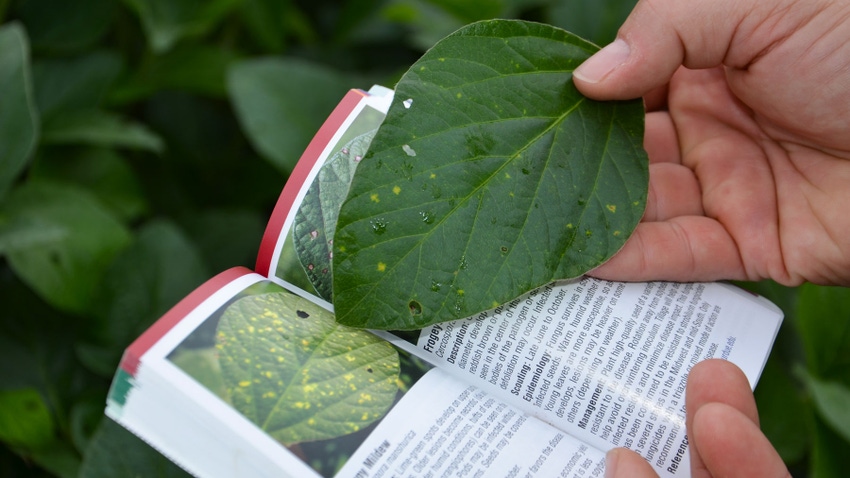June 21, 2023

Many people talk about minimizing stress during August to maximize soybean yields. Realistically, is there anything we can do if we don’t have irrigation? If we have irrigation, how often should we apply water?
The Indiana certified crop adviser panel answering this question includes Betsy Bower, agronomist for Ceres Solutions, Terre Haute; Abby Horlacher, Nickel Plate Consulting, Frankfort; and Brian Mitchem, proprietary products manager for Nutrien Ag Solutions, Fort Wayne.
Bower: Use of a fungicide reduces stress. It protects soybeans from diseases, especially frog eye leaf spot, but brown spot and cercospora also can be a problem.
We also find fungicide improves plant health and helps plants deal with stress. We have experimented with applying fungicides to soybeans in a dry year. Yield went up 10 bushels per acre. Applying certain foliar nutrients at R3 is beneficial because they provide a quick burst at a key time.
If you have irrigation, knowing how often to apply water is crucial. To make a recommendation, I would need to know about soil characteristics, as well as soil moisture at any given time. Installing a soil moisture probe allows us to understand water content, and we can recommend irrigation more efficiently. When it’s dry and soybeans are pulling 0.25 to 0.3 inch of water per acre per day in a sandy soil, you may apply an inch per week. In a silt loam soil, it may be different.
People often stop irrigating soybeans too soon. Even as soybeans start to yellow, you still need about 2 inches of rainfall or irrigation water to get them to maturity. Not irrigating that late can cost upward of 5 to 10 bushels per acre.
Horlacher: There are more types of stress than water stress, even though water stress tops the list. R3 and beginning pod fill are crucial stages for irrigation. This is a time you do not want to limit water to the crop. When turning on irrigation, make the pass beneficial by applying five to six days of water. In our area, that translates roughly to 1.2 to 2 inches. This will carry through the middle to end of August, till typical rain chances pick back up.
If you do not have irrigation, look at different stressors on the crop: nutrient deficiencies, diseases and insects. The best time to defend against disease pressure is at R3. If you have nutrient deficiencies, this is the time to come in with a liquid fertilizer with enough nutrients to correct your problem.
Before you make any of these passes, it is best to scout for insects. If insect pressure is yield-limiting, add an insecticide with your pass. When adding up cost of each product, make sure you’re making a decision that will maintain or increase profitability per acre.
Mitchem: Stress during reproductive stages can have a major impact on final yield, typically from a reduction in bean size. Heat and drought would be considered the most common form of stress during the August grain fill period.
Timely fungicide applications can aid in reducing heat stress in beans. Potassium levels in plants can be limiting, especially when the soil is dry. A foliar application of K has shown good returns. Maintaining adequate K levels in plants can help with moderate moisture stress. Additionally, there are kelp extracts, plant growth regulators and carbon-based products that show promise for stress mitigation.
Read more about:
IrrigationYou May Also Like




